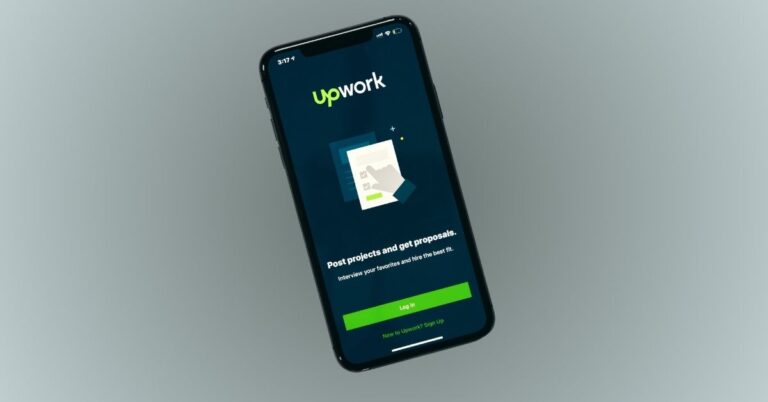12 (Conversion Rate Optimization) CRO Projects You Can Do in 2024
Ever heard a client say, “We need more sales”? What they’re really talking about is CRO, or Conversion Rate Optimization. By diving into CRO projects, you can boost their sales and sharpen your marketing skills.
Read on to discover how these projects can transform businesses and make you a better marketer.
Tips Before Choosing a Conversion Rate Optimization Project
Before going over any CRO Projects below, let’s go through some tips that you should keep in mind first:
Start Simple
Choose projects that address clear, measurable goals. Starting with simpler projects like A/B testing different headlines can give you quick insights and build your understanding.
Focus on Learning Opportunities
Pick projects that will teach you something new about your audience or your website, like user behavior analysis or heat mapping.
Evaluate Impact vs. Effort
Consider projects that offer valuable learning without requiring excessive time or resources, ensuring you get practical experience efficiently.
Now that we’ve got that out of the way, let’s go through some possible CRO projects that you can undertake as a beginner:
What are the Best CRO Projects for Beginners?
Test each of these CRO projects to determine which is best suited for your goals:
1. A/B Testing Different Headlines
Try different headlines on key pages and measure which ones perform better in terms of user engagement and conversion rates. This helps identify the language and messaging that resonates most with your audience.
How to Start:
- Define the objective: What are you trying to improve?
- Choose the headlines to test: Create variations based on your objective.
- Set up A/B tests using tools like Google Optimize or VWO.
- Run the test for a sufficient duration to gather data.
- Analyze results to determine which headline performs better.
2. Heat Mapping Analysis
Use heat mapping tools to visually understand how users interact with your website. This can reveal what areas of a page attract the most attention and where users tend to ignore, helping you optimize design and content placement.
How to Start:
- Select a heat mapping tool like Hotjar or Crazy Egg.
- Install the tracking code on your website.
- Choose pages you want to analyze.
- Collect data on user interactions.
- Review heatmaps to understand user behavior and make necessary changes.
3. User Journey Analysis
Track the routes users take through your website from entry to exit. Analyzing where users commonly drop off can pinpoint areas that need improvement to enhance the overall user experience and increase retention.
How to Start:
- Map out the current user journey.
- Identify key pages and actions in the funnel.
- Use analytics tools to track how users navigate through your site.
- Identify drop-off points and opportunities for optimization.
- Implement changes and measure the impact.
4. Segmented Email Campaigns
Create different email campaigns targeted at specific segments of your audience based on their behaviors or demographics. Testing which variations lead to better open rates and conversions can fine-tune your email marketing strategy.
How to Start:
- Segment your email list based on user behavior or demographic data.
- Develop targeted content for each segment.
- Use an email marketing platform to send and monitor campaigns.
- Analyze engagement and conversion metrics.
- Refine and repeat with insights gained.
5. Lead Form Optimization
Experiment with the design of your lead capture forms. Testing various form lengths, field types, and placements can reveal the most effective configurations that minimize user friction and maximize conversion rates.
How to Start:
- Identify which forms are critical for conversion.
- Design variations with different layouts and number of fields.
- Implement A/B testing to evaluate which version performs better.
- Analyze the data and refine the form based on results.
6. Mobile Optimization Tests
Focus on optimizing the mobile version of your website. Test different layouts, button sizes, and content structures to ensure the site is user-friendly on mobile devices, aiming to improve the mobile user experience and boost mobile conversions.
How to Start:
- Review your site’s mobile responsiveness.
- Identify elements that need optimization (like menus, buttons, images).
- Use tools like Google’s Mobile-Friendly Test to assess changes.
- Implement changes and monitor the impact on user behavior and conversion rates.
7. Cart Abandonment Strategies
Implement strategies to reduce shopping cart abandonment, such as sending reminder emails or using exit-intent pop-ups offering discounts. Testing different messages and timings can help you find the most effective methods to encourage users to complete their purchases.
How to Start:
- Analyze cart abandonment rates and patterns.
- Develop strategies such as email reminders or exit-intent pop-ups.
- Test these strategies to see which reduces abandonment.
- Refine based on performance data.
What are Some Good CRO Projects for Intermediate to Expert Levels?
For those at the intermediate to expert level, here are some more challenging CRO projects:
8. Progressive Personalization
Implement advanced personalization tactics that adapt content and offers based on user behavior over multiple sessions. This involves complex data tracking and analysis to dynamically change user experiences.
How to Start:
- Identify key user behaviors and preferences through data analysis.
- Define personalization goals aligned with user expectations and business objectives.
- Implement personalization technology that can dynamically adjust content.
- Start with simple rules-based personalization, then progress to more complex algorithms as you collect more data.
9. Algorithmic Pricing Tests
Experiment with dynamic pricing strategies where prices adjust based on user demand, market conditions, or user behavior patterns. This requires integration with your data systems and sophisticated modeling.
How to Start:
- Define the pricing strategy goals (increase sales, optimize profit, etc.).
- Collect historical pricing data and user interaction data.
- Implement machine learning algorithms to model pricing strategies.
- Test different pricing models in controlled experiments.
- Continuously monitor and refine algorithms based on performance.
10. Advanced User Segmentation with Machine Learning
Utilize machine learning to create highly refined user segments based on a vast array of behavioral data. This allows for extremely targeted marketing and optimization strategies.
How to Start:
- Collect and integrate data from various touchpoints (web interactions, purchases, etc.).
- Use machine learning techniques to analyze and create detailed user segments.
- Implement targeted strategies for each segment.
- Monitor results and continuously refine segmentation criteria and strategies.
11. Multichannel Attribution Modeling
Develop models to analyze which marketing channels contribute most to conversions, considering multiple touchpoints. This is crucial for optimizing marketing spend across channels.
How to Start:
- Gather data from all channels involved in your marketing and sales processes.
- Choose an attribution model (last-click, first-click, linear, time decay, etc.) that best fits your business model.
- Use analytics tools to apply the model and measure channel effectiveness.
- Continuously refine the model based on new data and changing business strategies.
12. Automated Behavioral Trigger Emails
Set up automated emails triggered by specific user actions, like visiting certain pages or spending a certain amount of time on site. This involves deep integration with your CRM and web analytics.
How to Start:
- Identify key behaviors that indicate user intent or interest.
- Develop email content that corresponds to these behaviors.
- Use an email marketing automation tool to set up triggers based on the behaviors.
- Test and refine email triggers and messages based on user engagement and conversion metrics.
FAQs
Before ending this topic about CRO projects, let’s go through some questions you might have as we’ve gone through this article:
What are common challenges in multivariate testing, and how can they be overcome?
Multivariate testing can be complex due to the large number of combinations being tested. Overcoming these challenges involves simplifying test designs, ensuring adequate traffic for statistical significance, and using software tools designed to manage and analyze multivariate tests efficiently.
How can predictive analytics be integrated into CRO without infringing on user privacy?
Integrating predictive analytics must be done with respect to user privacy by anonymizing data, securing user consent where necessary, and adhering to regulations such as GDPR. Employing privacy-preserving techniques like differential privacy can also help.
What tools are recommended for advanced segmentation in CRO?
Advanced segmentation can be effectively managed using tools like Google Analytics for basic segmentation, and more sophisticated platforms like Adobe Marketing Cloud or Salesforce for deeper, behavioral-based segmentation.
How can you measure the effectiveness of behavioral email targeting in CRO?
Measure the effectiveness of behavioral email targeting by tracking open rates, click-through rates, and conversion rates specific to each campaign. A/B testing can also be used to compare the performance of behavioral emails against non-targeted emails.
What strategies ensure the continuous improvement of a conversion funnel?
Continuous improvement of a conversion funnel can be achieved by regularly analyzing funnel performance, identifying bottlenecks, testing changes to alleviate these bottlenecks, and staying updated with new CRO tools and techniques.
Conclusion
Juan Remote Work is a platform that aims to help you improve. By exploring all these CRO project ideas, we ensure that you can undertake each one to become more effective at CRO.
If you want to read more from us, head over to our blog where we’ve covered topics like ‘What are the Best Investments That Beginners Can Make Right Now?’, ‘What are SEO Complementary Skills‘, and more.
To wrap things up, these projects offer practical ways to apply CRO techniques, providing valuable insights into how various changes affect user behavior and site performance.
We hope we’ve helped you find what you’re looking for. If you have any other questions, just drop them below.
And as always – take care!







